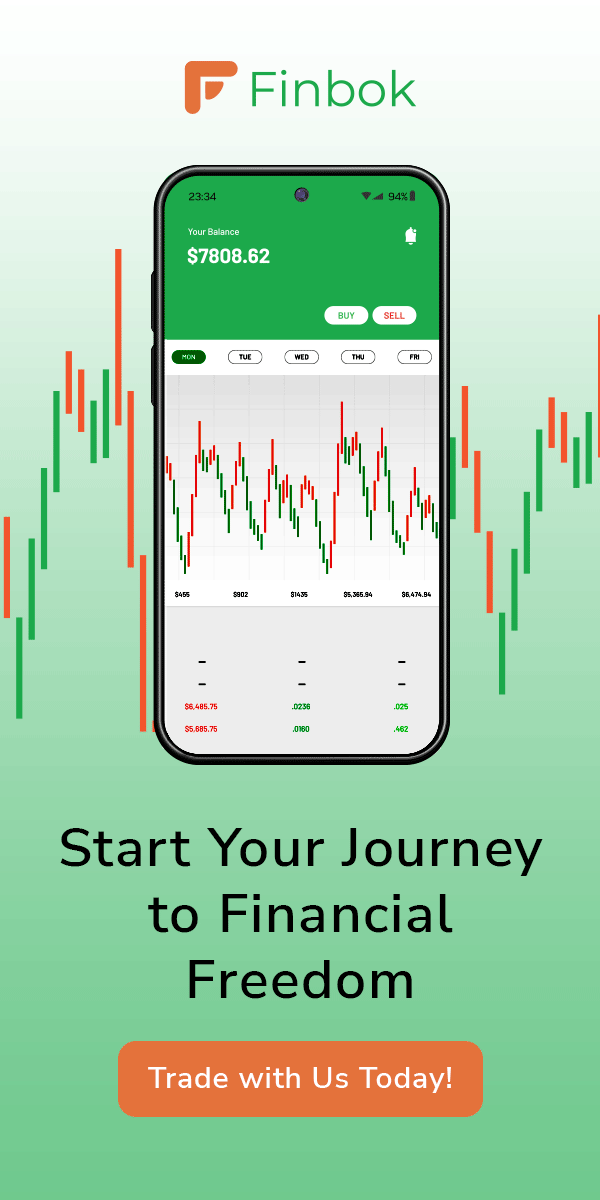Oil trading is a market that’s risen to record highs and lows in the past 4 years.
By trading oil, you’ll be able to tap into a market worth $2.3 trillion and diversify your portfolio.
In this article, Finbok provides a comprehensive overview of the variables that drive the oil trading market, as well as how to include oil in your financial market strategy.
Oil Trading – Demand
Oil trading is a worldwide commodity market. The United States Energy Information Administration (EIA) predicts that global oil trading demand will exceed 120 million barrels per day in 2024, a record high.
When oil prices rise, demand in developed economies falls, while demand in rising emerging market economies is predicted to climb as these countries industrialize regardless of oil prices.
Some developing market economies provide fuel subsidies to consumers.
However, subsidies are not always good for a country’s economy since, while they tend to increase demand, they may also force the country’s oil producers to sell at a loss.
As a result, reducing subsidies can enable a country to expand oil production, thereby increasing supply and decreasing prices.
Furthermore, reducing subsidies can alleviate any shortages of refined products, as higher oil prices encourage refineries to produce items such as diesel and gasoline.
In 2023, 101 million barrels of oil were produced each day, setting a new record. However, oil exploration is slowing overall. New reserves were discovered in 2017.
For example, it was the lowest since the 1940s, and the amount of reserves discovered has decreased every year since 2014 as expenditures for oil exploration have been reduced following the drop in oil prices throughout the 2010s.

Oil Trading: A Question of Quality
Most OPEC countries are unable to produce significantly more oil. Saudi Arabia is the only exception, with an estimated spare capacity of 1.5 to 2 million barrels of oil per day.
Companies record oil reserves in their financial accounts using one of two approaches.
They can utilize either the whole cost or successful efforts method in their accounting.
One of the primary issues confronting the oil trading market is a scarcity of high-quality sweet crude, the type of low-sulfur oil that many refineries require to meet tough environmental standards, notably in the United States.
This is why, despite increased domestic oil output, the United States must continue to import oil.
Every country has a varied refining capacity. For example, the United States generates a significant amount of light crude oil that may be exported.
Meanwhile, it imports different types of oil to increase production based on refining capacity.
There are significant disparities in where oil is produced and sold.
Brent Crude, for example, is derived from oil fields in the North Sea between the Shetland Islands and Norway, whereas West Texas Intermediate is sourced from oil fields in the United States, primarily in Texas, Louisiana, and North Dakota.
Brent Crude and West Texas Intermediate are light and the majority is lacking in impurities making them ideal for refining into gasoline.
Oil Trading – Speculation
Aside from supply and demand, investors and speculators bidding on oil futures contracts have also pushed oil prices higher.
Many significant institutional investors in the oil markets, such as pension and endowment funds, use commodity-linked investments to diversify their portfolios over time.
Others, especially Wall Street speculators, trade oil futures for short periods of time to profit quickly.
Some analysts attribute the large short-term volatility in oil prices to these speculators, while others say their influence is limited.

Oil Trading – Market Investment Opportunities
Investors wishing to take advantage of energy price fluctuations and engage in the oil market have multiple options.
The majority of oil trading takes place in derivatives markets, which use futures and options contracts.
Many individual investors may not be able to afford them, but there are other ways to diversify your portfolio using oil.
One simple way for a regular person to invest in oil is to buy stocks in oil drilling and service firms.
In addition, investors can obtain indirect exposure to oil by purchasing energy-related ETFs.
Several sector mutual funds that invest primarily in energy-related equities are available, including the iShares Global Energy Sector Index Fund (IXC) and the T. Rowe Price New Era Fund (PRNEX).
These energy-specific ETFs and mutual funds invest primarily in the equities of oil and oil service firms, resulting in lesser risk.
An exchange-traded fund (ETF) or exchange-traded note (ETN) can provide investors with more direct exposure to oil prices by investing in oil futures contracts rather than energy companies.
Oil Trading – World’s Largest Oil Producers
Because oil trading prices are largely uncorrelated with stock market returns or the direction of the US dollar, these products track the price of oil more closely than energy stocks, making them useful as a hedge and portfolio diversifier.
The United States is the world’s greatest producer of oil, accounting for around 20% of total output.
In 2018, the country surpassed Russia to claim the top rank, thanks to shale output and energy independence measures.
According to the Energy Information Administration, the United States will export around 9.58 million barrels of oil per day in 2022.
Oil Trading – Top 10 largest oil producers
Today the United States is the world’s major producer, followed by Saudi Arabia and Russia.
Iran, Kuwait, and Iraq all rank in the top ten oil-producing countries.
Notably, the presence of multiple supergiant oil sources inside the Arabian-Iranian basin boosts these three countries’ positions in the global oil market. Other major oil producers include China, Canada, and Brazil.
However, the distinction between oil producers and oil exporters should not be confused, as some producers are not the largest oil exporters.
The United States, Brazil, Guyana, and Canada are poised to produce more oil than ever before. This increase is expected to boost global oil supply by 1.5 million barrels per day (mb/d), hitting a new high of 103.5 mb/d.
According to the International Energy Agency (IEA), 1.5 million barrels per day generated by non-OPEC countries will be the key driver of this growth in 2024.
The EIA predicts a 0.6 mb/d increase in worldwide liquid fuel output in 2024, which is significantly lower than the 1.7 mb/d increase seen in 2023.
This slowdown in global liquid fuel production is due to slower non-OPEC growth combined with production cuts enacted by OPEC+, which includes OPEC and another ten petroleum-producing and exporting countries.
The EIA anticipates a 0.6 million barrel per day decline in OPEC+ crude oil production in 2024, offset by a 1.2 million barrel per day increase in output from non-OPEC countries.
The expected growth rates are lower than the previous year, owing to slowing supply growth in the United States, Canada, and Brazil.
| Rank | Country | 2022 Production (Thousand B/D) | YoY Change | Share of World Supply | |——|——————-|——————————–|————|———————–| 1 | 🇺🇸 U.S. | 17,770 | +6.5% | 18.9% | 2 | 🇸🇦 Saudi Arabia | 12,136 | +10.8% | 12.9% | 3 | 🇷🇺 Russia | 11,202 | +1.8% | 11.9% | 4 | 🇨🇦 Canada | 5,576 | +3.0% | 5.9% | 5 | 🇮🇶 Iraq | 4,520 | +10.2% | 4.8% | 6 | 🇨🇳 China | 4,111 | +2.9% | 4.4% | 7 | 🇦🇪 UAE | 4,020 | +10.4% | 4.3% | 8 | 🇮🇷 Iran | 3,822 | +4.6% | 4.1% | 9 | 🇧🇷 Brazil | 3,107 | +3.9% | 3.3% | 10 | 🇰🇼 Kuwait | 3,028 | +12.0% | 3.2% |
1 Big Oil, Big Money – The United States of America
Since 2018, the United States has been the world’s leading producer of oil.
The United States’ oil production has increased as a result of technological advancements such as hydraulic fracturing and horizontal drilling.
This expansion has increased the country’s energy security, helped the economy, and changed the dynamics of the global oil market.
The United States is currently producing an unprecedented 13.5 million barrels of crude oil per day, setting a national and potentially world record.
With increases in well efficiency, the country’s oil production is likely to rise further during the following two years.
The top three largest crude oil deposits are found in Texas, North Dakota, and the Gulf of Mexico.
2 Oil Reserves At Risk – Saudi Arabia
The country’s position in the global energy market is bolstered by the fact that it has the second-largest proven petroleum reserves in the world, accounting for around 17%.
The discovery of the Al-Ghawar field catapulted Saudi Arabia into prominence as an oil producer.
It alone allows Saudi Arabia to create approximately 5.5 billion b/d.
In the first six months of 2023, Saudi Arabia’s crude oil output averaged roughly 10.2 million barrels per day.
However, beginning in July, the country unilaterally reduced production by 1 million barrels per day, bringing its annual output to 9 million barrels per day in the final six months of 2023.
Saudi Arabia, along with many other OPEC+ members, has extended its crude oil production restrictions through 2024, decreasing output by an additional one million barrels per day from July to December 2023.
3 The Great Disruptor – Russia
It is claimed that Russia offers the highest potential for discoveries.
Rich oil reserves, notably in Western Siberia, contribute to the region’s remarkable production levels. Russian oil businesses employ modern drilling and extraction technologies to efficiently access these massive resources.
Despite the Western sanctions imposed on Russia after Vladimir Putin launched a full-scale invasion of neighboring Ukraine, the country’s oil exports have returned to pre-invasion levels.
To replace European consumers, it appears to have found purchasers in China and India.
Russia, a crucial ally of Saudi Arabia in the OPEC+ alliance, is expected to produce approximately 9 million barrels of crude oil per day.
However, since the invasion of Ukraine, the country has withheld information about its oil output and exports.
Analysts estimate that crude oil production in Russia, the world’s third-largest producer after the United States and Saudi Arabia, will remain steady or potentially increase in 2024.
The official Russian oil production ceiling for 2024 is 9.95 million barrels per day, but from February 2023, it has voluntarily reduced its output by 500,000 barrels per day, and other OPEC+ members have followed suit, including Saudi Arabia.
Oil Trading – A great asset for your portfolio
Because of their vast oil reserves and excellent production capacity, the major oil-producing countries have a significant impact on global development.
Oil is necessary to promote economic growth, sustain industry, and meet the world’s energy demands.
However, relying on oil exports has challenges, such as environmental issues and economic volatility caused by fluctuations in oil prices.
Oil-related wealth can either drive development and diversification or perpetuate inequality and political upheaval.
Oil Trading in South Africa: Benefits of Trading with Finbok in 2024
Regulatory Compliance and Security: Finbok follows strict regulatory guidelines to provide a secure and transparent trading environment. Cutting-Edge Technical Integration: The platform combines the newest technical breakthroughs, allowing for speedy and informed trading decisions. Award-Winning Services: Finbok’s services have been acknowledged throughout the industry for their superior customer service, technology, and overall trading experience. Diverse Asset Offerings: Traders can choose from a wide range of trading instruments, allowing them to diversify their portfolios and take advantage of various market possibilities. Educational Resources and Support: Finbok provides substantial educational materials for both novice and seasoned traders, as well as excellent customer service. Advanced Risk Management Tools: The platform includes sophisticated tools for effective risk management, which is an important feature of trading, particularly during turbulent periods such as earnings season. Competitive Spreads and Low Fees: Finbok provides cost-effective trading, which is critical for maintaining profitability, particularly among frequent traders. Community and Networking Opportunities: The platform includes a trader community, which allows for networking and strategy sharing, thereby improving the entire trading experience. Continuous Innovation: Finbok’s services are regularly updated, ensuring that traders have access to the most up-to-date and efficient trading tools and information.







